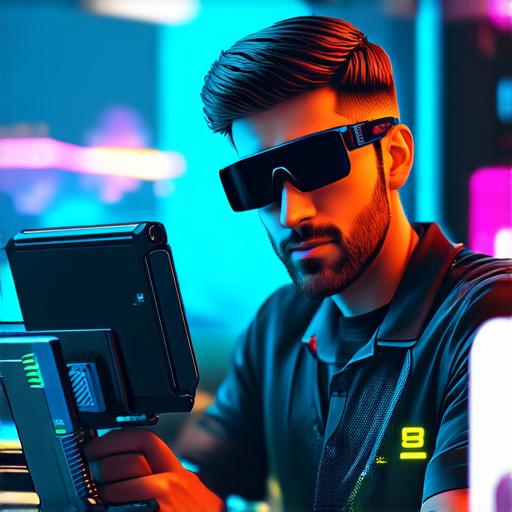Understanding the Basics of Augmented Reality
Before diving into the technical aspects of AR development, it’s crucial to understand what augmented reality is and how it works. AR technology enhances the real world by overlaying digital information onto the environment. This can be done using a variety of devices such as smartphones, tablets, or specialized hardware like AR glasses.
To get started with AR development, you need to have a solid understanding of programming concepts and be familiar with popular programming languages such as Unity, Unreal Engine, or C++. Additionally, you should have some experience in 3D modeling and animation using software such as Blender or Maya.

Choosing Your Development Platform
Once you have a basic understanding of AR technology and programming concepts, the next step is to choose your development platform. There are several options available, each with its own set of features and capabilities.
One popular AR development platform is Unity AR Foundation. This platform provides a set of tools for creating AR experiences using Unity, a popular game engine. It includes features such as object tracking, image recognition, and plane detection. Another option is Vuforia SDK, which allows developers to create AR experiences on both iOS and Android devices. It supports a variety of features including image recognition, object tracking, and markerless tracking.
ARKit is another platform that is specifically designed for Apple devices and provides a set of tools for creating AR experiences using Swift or Objective-C programming languages. Choosing the right development platform will depend on your specific needs and preferences.
Learning Augmented Reality Programming Concepts
Once you have chosen your development platform, the next step is to learn the programming concepts specific to AR development. This will include learning how to create 3D models, integrate them into the real world using AR tracking, and handle user interaction.
One of the most important skills for AR developers is understanding how to use AR tracking effectively. AR tracking involves detecting and tracking objects in the real world, which allows you to create interactive experiences that respond to the user’s environment. This requires a good understanding of computer vision techniques and algorithms.
Another crucial skill for AR developers is knowledge of 3D modeling and animation. This includes creating realistic 3D models that can be integrated into the real world and animating them in response to user interaction. It’s important to note that AR development requires a combination of technical skills, creativity, and a willingness to learn and experiment.
Experimenting with Augmented Reality Tools and Frameworks
Experimentation is an essential part of learning any new technology, including AR development. To become proficient in AR development, you need to spend time experimenting with different tools and frameworks to see what works best for your specific needs.
One of the best ways to learn AR development is by working on real-world projects. This can be done through open-source projects, collaborations with other developers, or even by building your own projects from scratch. By working on real-world projects, you can gain practical experience and build a portfolio of work that showcases your skills.
Staying Up-To-Date with the Latest Developments in AR Technology
Finally, it’s crucial to stay up-to-date with the latest developments in AR technology. AR is an evolving field, and new technologies and tools are constantly emerging. To remain competitive in the industry, you need to stay informed about the latest trends and technologies.
One way to stay up-to-date with the latest developments in AR technology is by following key influencers and thought leaders in the field. These individuals are often at the forefront of new developments and can provide valuable insights into the latest trends and technologies. Additionally, attending conferences and workshops related to AR development can also help you stay informed about the latest advancements in the field.
Conclusion
Becoming an augmented reality developer requires a combination of technical skills, creativity, and a willingness to learn and experiment. By following the essential steps outlined in this article, aspiring AR developers can gain the knowledge and experience needed to succeed in this exciting and rapidly evolving field. Remember to choose your development platform wisely, learn the programming concepts specific to AR development, experiment with different tools and frameworks, and stay up-to-date with the latest developments in AR technology. With dedication and hard work, you can become a successful augmented reality developer and make a meaningful impact on the world of technology.
